Abstract
This paper describes a drug ordering decision support system that helps with the prevention of adverse drug events by detecting drug-drug interactions in drug orders. The architecture of the system was devised in order to facilitate its use attached to physician order entry systems. The described model focuses in issues related to knowledge base maintenance and integration with external systems. Finally, a retrospective study was performed. Two knowledge bases, developed by different academic centers, were used to detect drug-drug interactions in a dataset with 37,237 drug prescriptions. The study concludes that the proposed knowledge base architecture enables content from other knowledge sources to be easily transferred and adapted to its structure. The study also suggests a method that can be used on the evaluation and refinement of the content of drug knowledge bases.
Full text
PDF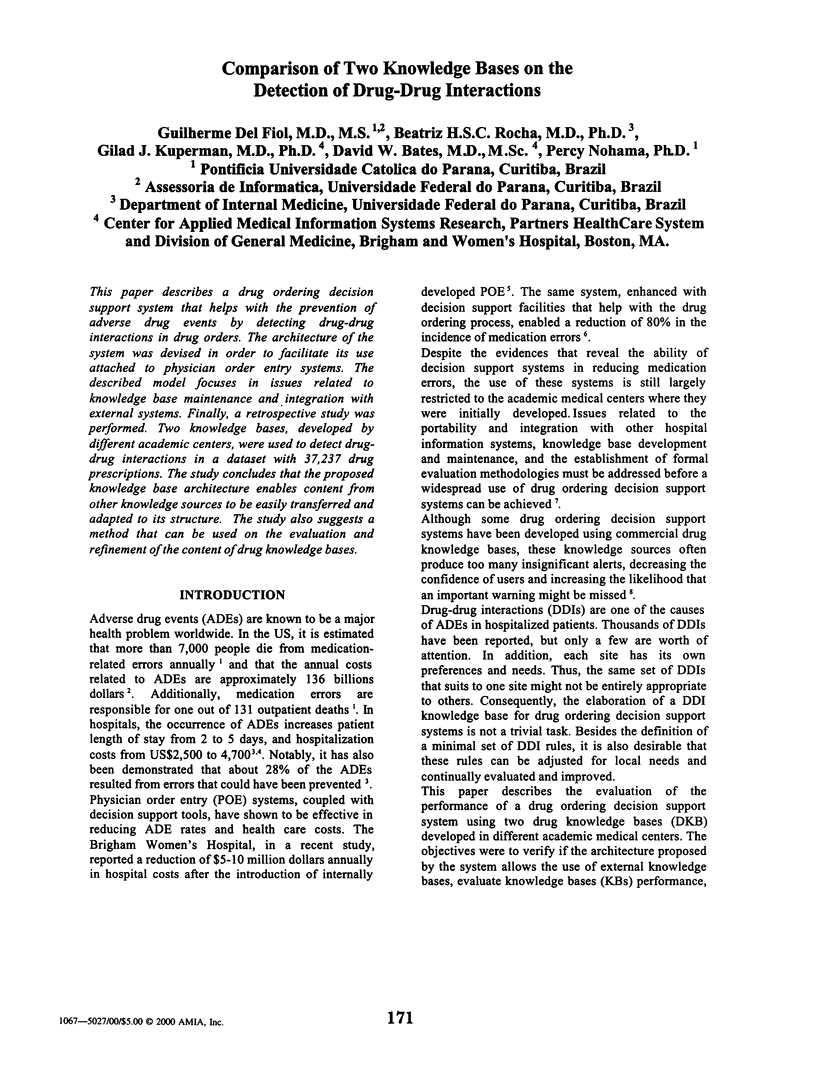
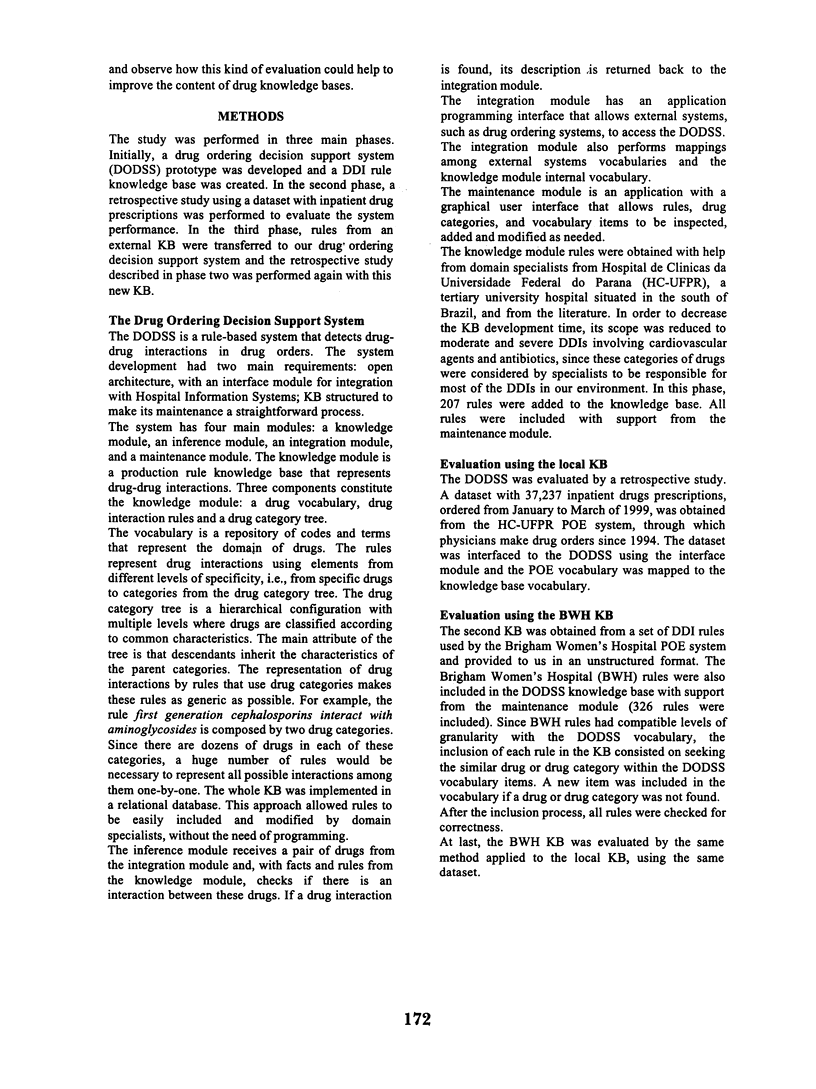
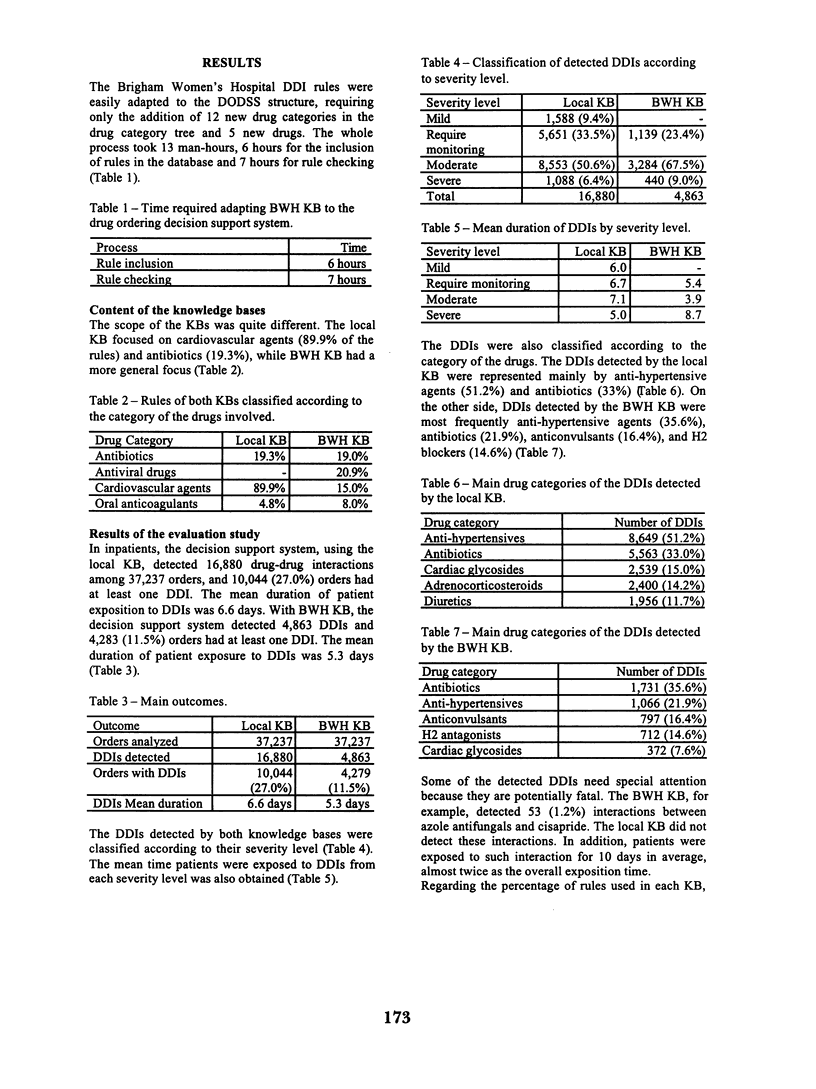
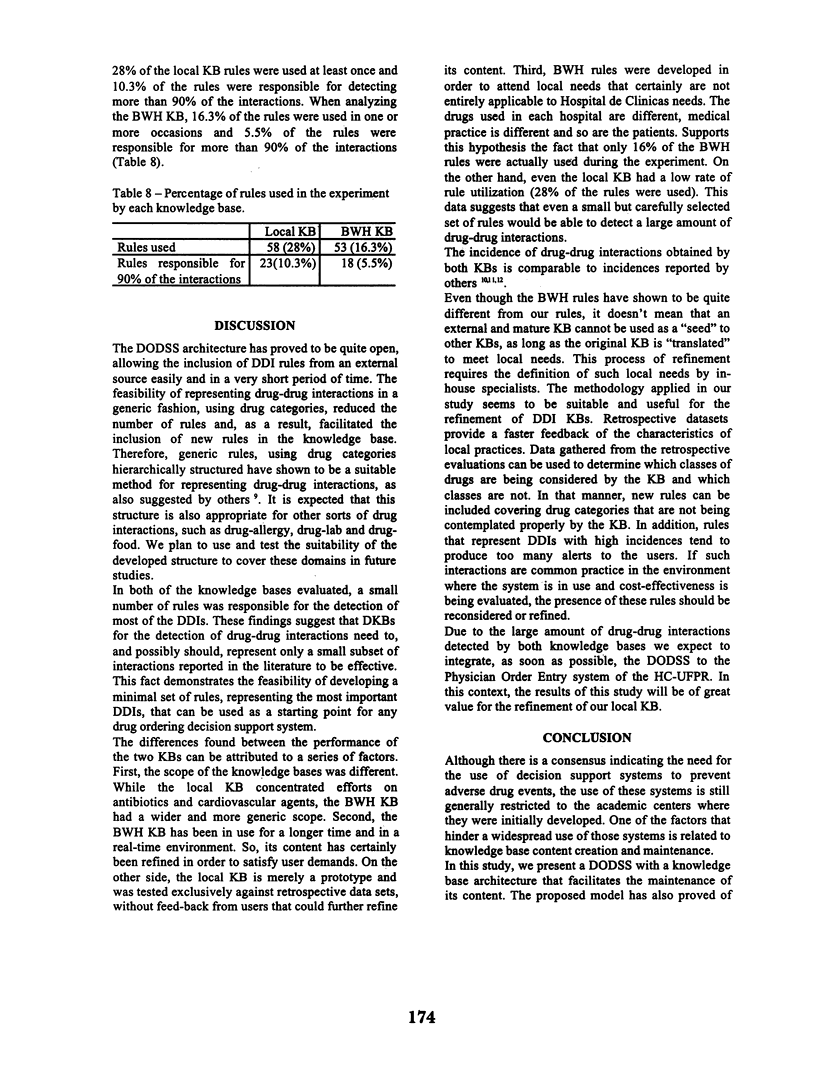
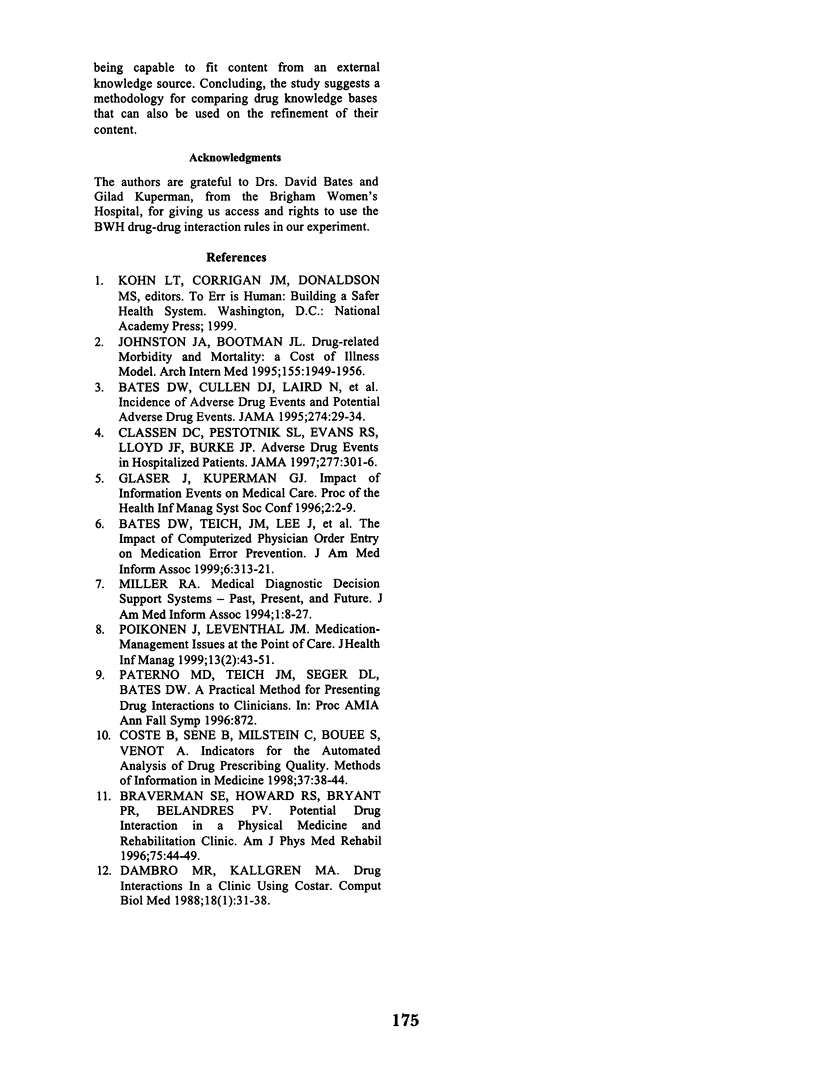
Selected References
These references are in PubMed. This may not be the complete list of references from this article.
- Bates D. W., Cullen D. J., Laird N., Petersen L. A., Small S. D., Servi D., Laffel G., Sweitzer B. J., Shea B. F., Hallisey R. Incidence of adverse drug events and potential adverse drug events. Implications for prevention. ADE Prevention Study Group. JAMA. 1995 Jul 5;274(1):29–34. [PubMed] [Google Scholar]
- Bates D. W., Teich J. M., Lee J., Seger D., Kuperman G. J., Ma'Luf N., Boyle D., Leape L. The impact of computerized physician order entry on medication error prevention. J Am Med Inform Assoc. 1999 Jul-Aug;6(4):313–321. doi: 10.1136/jamia.1999.00660313. [DOI] [PMC free article] [PubMed] [Google Scholar]
- Braverman S. E., Howard R. S., Bryant P. R., Belandres P. V. Potential drug interactions in a physical medicine and rehabilitation clinic. Am J Phys Med Rehabil. 1996 Jan-Feb;75(1):44–49. doi: 10.1097/00002060-199601000-00013. [DOI] [PubMed] [Google Scholar]
- Classen D. C., Pestotnik S. L., Evans R. S., Lloyd J. F., Burke J. P. Adverse drug events in hospitalized patients. Excess length of stay, extra costs, and attributable mortality. JAMA. 1997 Jan 22;277(4):301–306. [PubMed] [Google Scholar]
- Coste J., Séné B., Milstein C., Bouée S., Venot A. Indicators for the automated analysis of drug prescribing quality. Methods Inf Med. 1998 Jan;37(1):38–44. [PubMed] [Google Scholar]
- Dambro M. R., Kallgren M. A. Drug interactions in a clinic using COSTAR. Comput Biol Med. 1988;18(1):31–38. doi: 10.1016/0010-4825(88)90054-6. [DOI] [PubMed] [Google Scholar]
- Johnson J. A., Bootman J. L. Drug-related morbidity and mortality. A cost-of-illness model. Arch Intern Med. 1995 Oct 9;155(18):1949–1956. [PubMed] [Google Scholar]
- Miller R. A. Medical diagnostic decision support systems--past, present, and future: a threaded bibliography and brief commentary. J Am Med Inform Assoc. 1994 Jan-Feb;1(1):8–27. doi: 10.1136/jamia.1994.95236141. [DOI] [PMC free article] [PubMed] [Google Scholar]


